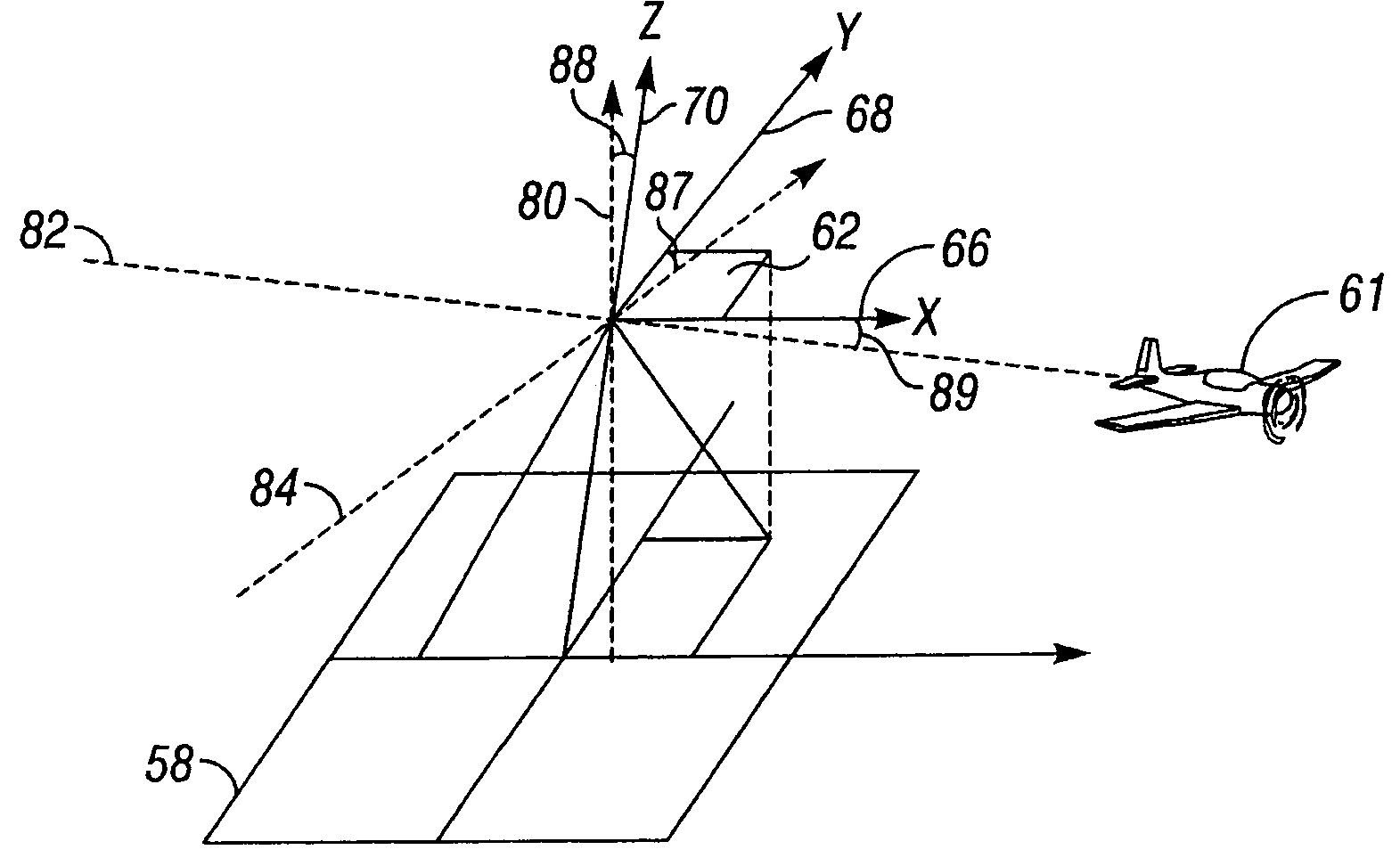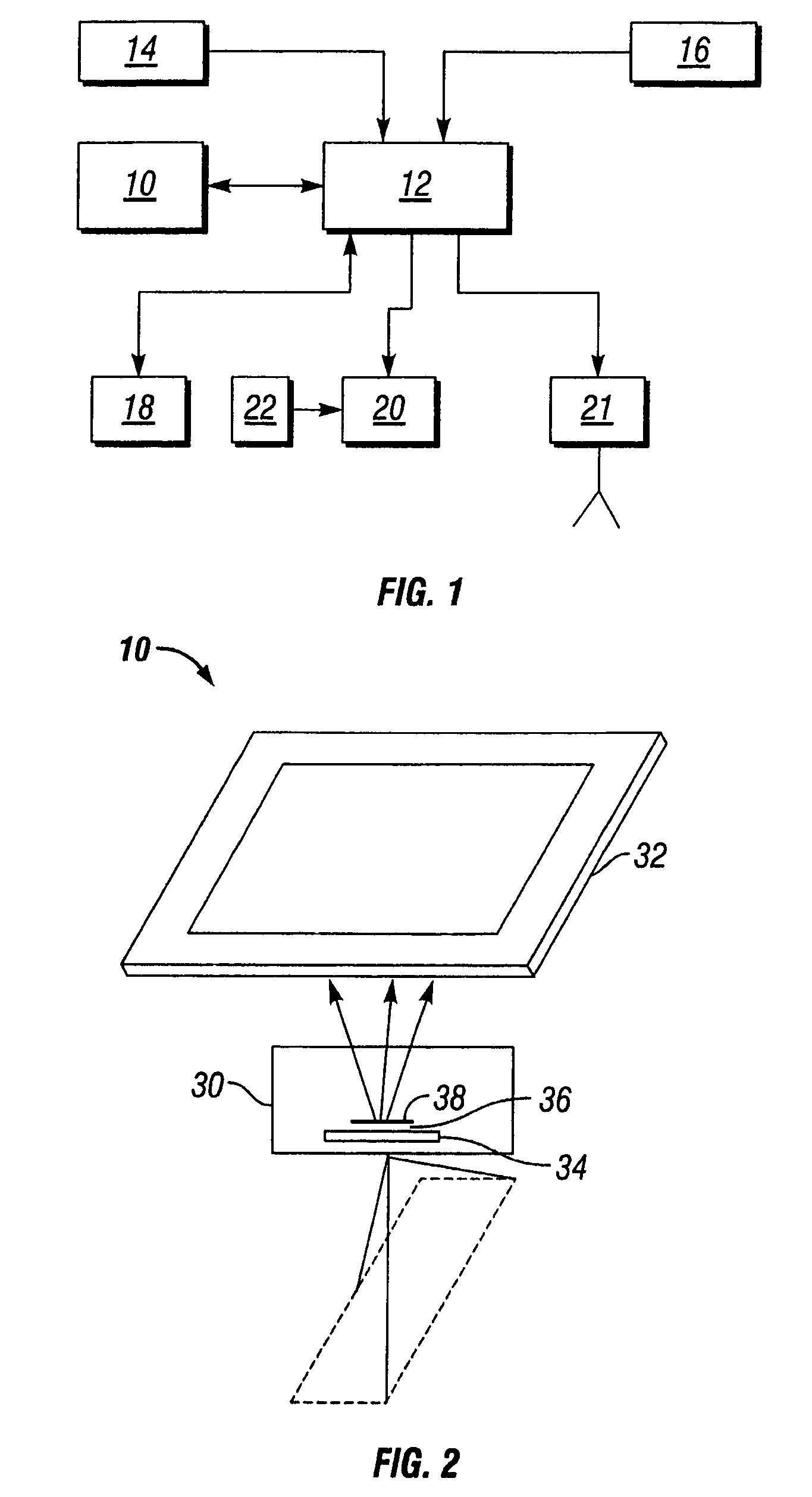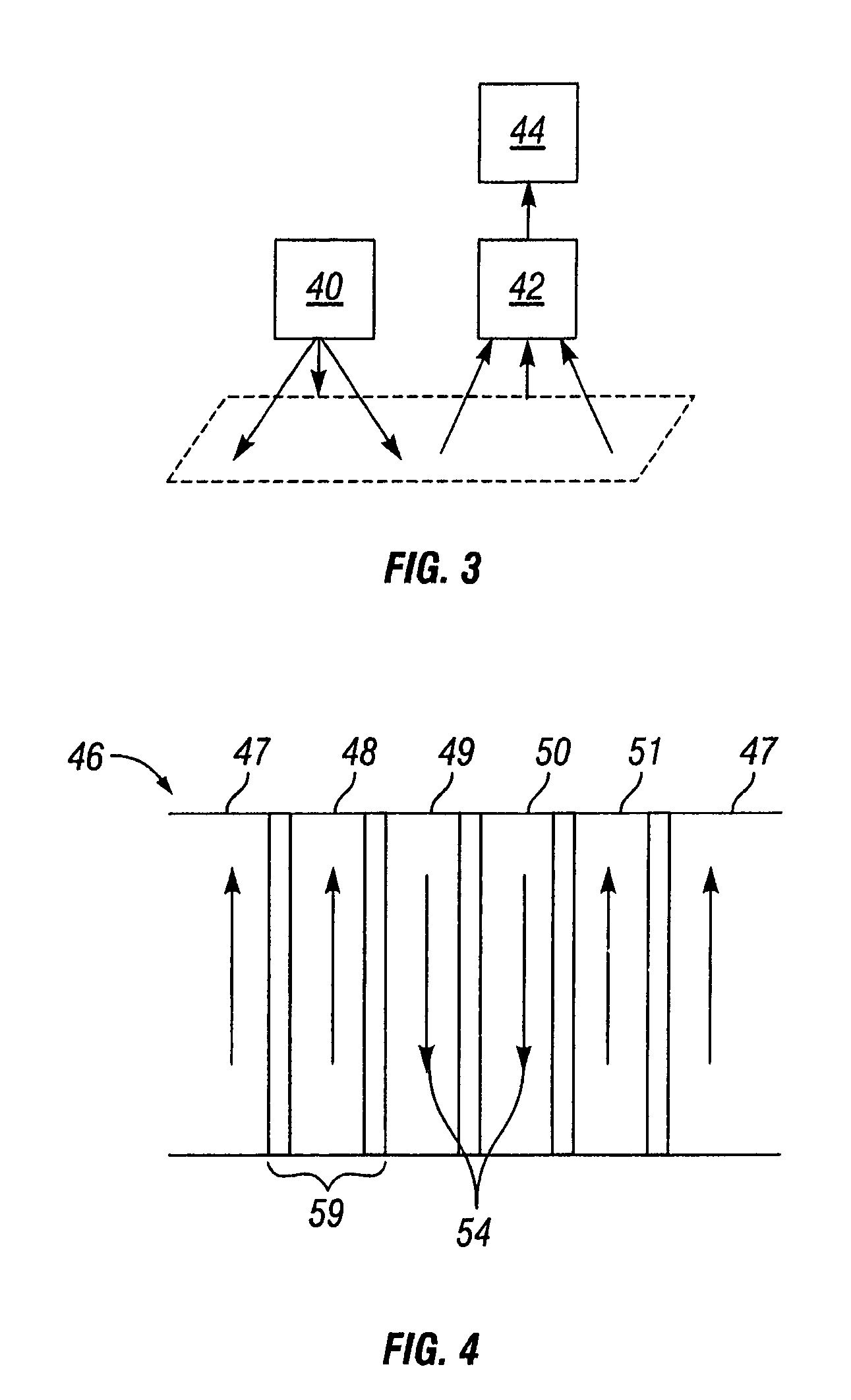Method of using a self-locking travel pattern to achieve calibration of remote sensors using conventionally collected data
a technology of self-locking travel pattern and remote sensor, which is applied in the field of vehicle mounted imaging, can solve the problems of insufficient information to obtain accurate records inferior geometric fidelity in image quality, and inability to obtain accurate data of the location of the sensor, so as to remove the bias in image output
- Summary
- Abstract
- Description
- Claims
- Application Information
AI Technical Summary
Benefits of technology
Problems solved by technology
Method used
Image
Examples
Embodiment Construction
[0023]The present invention provides a method of calibrating remote sensors using remote sensing data collected during conventional operation of a vehicle. FIG. 1 depicts an aircraft on-board remote sensing system that can utilize a preferred embodiment of the method of the present invention. The on-board remote sensing system has at least one remote sensor device 10 that is designed to obtain data of a site flown over by an aircraft. The remote sensor device 10 is associated with a computer 12 suited to form, select and correct images of the site flown over. The computer 12 is connected to a positioning device 14 to allow continuous association of geographic data with the images acquired. The computer 12 can also be connected to an attitude-sensing device 16 whose indications allow readjustment of the images acquired according to the trajectory of the aircraft. The on-board system can further comprise a memory unit 18 and navigation guidance system 20 to provide immediate feedback ...
PUM
 Login to View More
Login to View More Abstract
Description
Claims
Application Information
 Login to View More
Login to View More - R&D
- Intellectual Property
- Life Sciences
- Materials
- Tech Scout
- Unparalleled Data Quality
- Higher Quality Content
- 60% Fewer Hallucinations
Browse by: Latest US Patents, China's latest patents, Technical Efficacy Thesaurus, Application Domain, Technology Topic, Popular Technical Reports.
© 2025 PatSnap. All rights reserved.Legal|Privacy policy|Modern Slavery Act Transparency Statement|Sitemap|About US| Contact US: help@patsnap.com



